When Montenegro officially gained independence from Serbia and Montenegro in 2006, it introduced a national flag that represents its long-standing heritage and identity. Yet, the journey toward defining Montenegrin national symbols – like in much of the former Yugoslavia – has been complex and controversial. Montenegro, having been influenced by centuries of foreign rule, cultural shifts, and with a difficult path to independence, is no different in this regard.
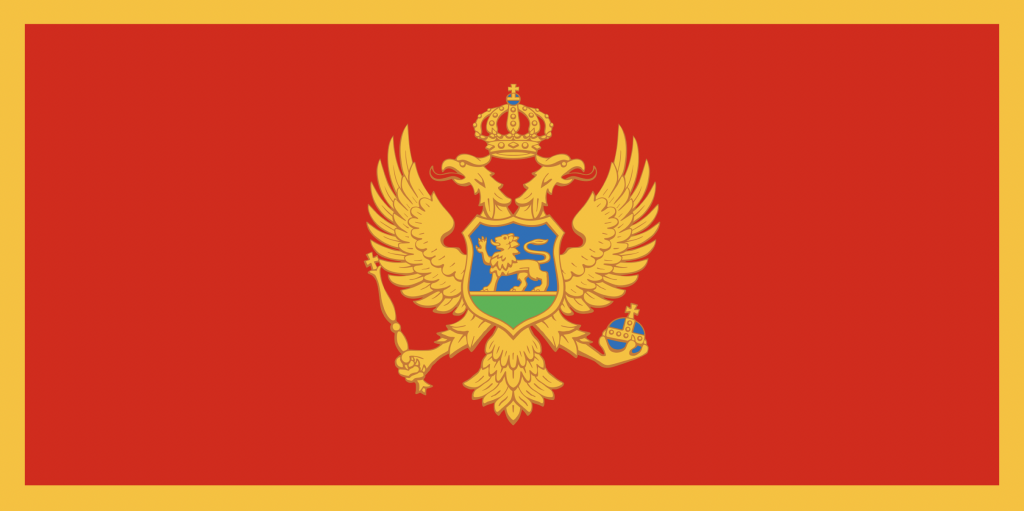
Here, we explore the history behind the current Flag of Montenegro, the evolution of the country’s symbols, and why these are all significant for Montenegrins today.
Table of Contents
Montenegro’s Early Flags – the Rise of a Kingdom
While Slavs have been in what is now Montenegro for over a millennium, its history as a distinct region dates to the medieval Principality of Duklja in the 15th century. Later known as the Kingdom of Zeta, this marked some of the earliest forms of Montenegrin self-rule.
Montenegro was also governed at various times by both the Venetians and the Ottomans, each imposing their own national flags. During these periods, no distinct flag of Montenegro was recognized, even on a provincial level.
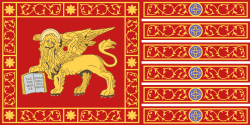
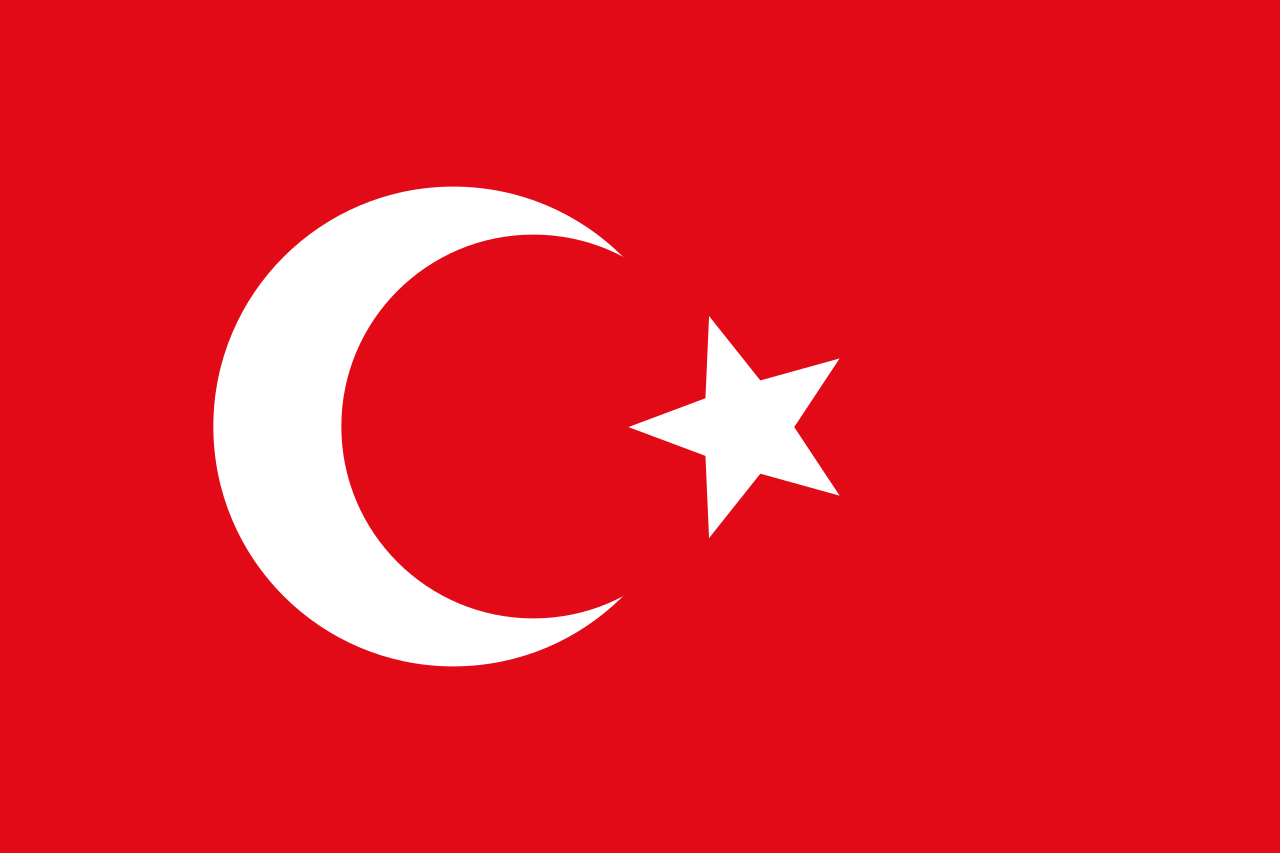
In the late 18th and early 19th centuries, Montenegro began establishing itself as an independent principality. This was possible due to their numerous rebellions against Ottoman rule as well as strong and ongoing connections to the Serbian Orthodox Church.
During this time, Montenegrin leaders and rulers began using a banner with a red field and a cross in the middle, embodying both religious affiliation and a symbol of sovereignty. Red has since become an enduring symbol in Montenegrin flags, to demonstrate their legacy of resilience and strong historic identity.
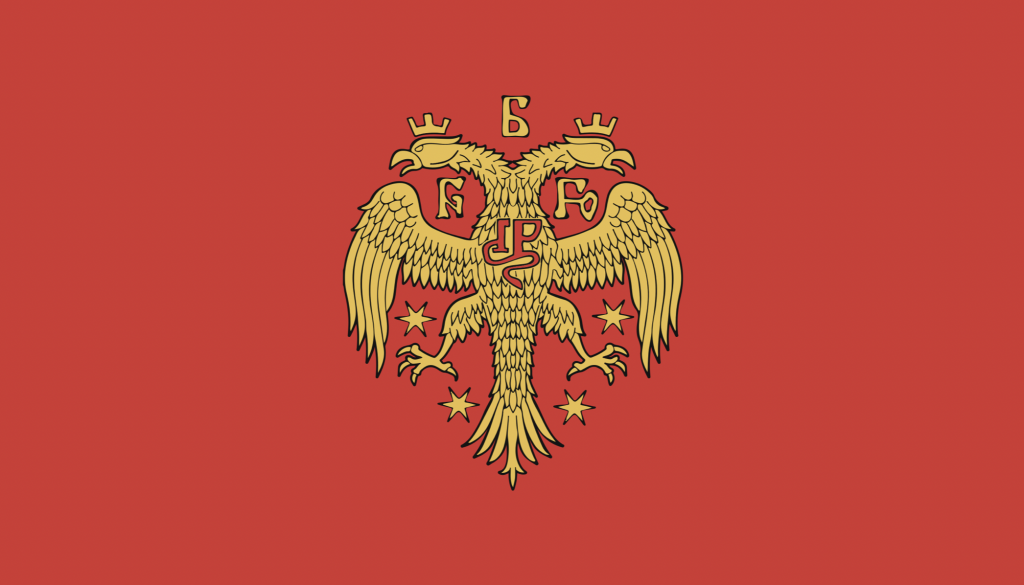
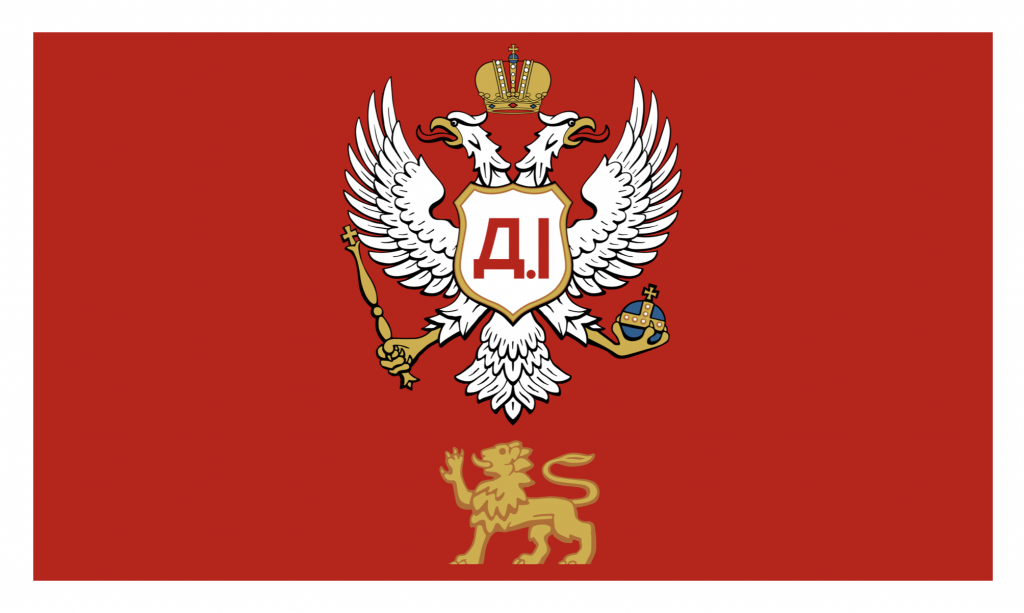
By 1878, Montenegro was recognized as an independent kingdom by the Treaty of Berlin, which marked the end of Ottoman rule over much of the Balkans. The Montenegrin royal family, the Petrović-Njegoš dynasty, used a flag featuring a red field with a golden border and the double-headed eagle, a symbol of its regal heritage and Orthodox ties. This era also saw the golden lion used as a national symbol, as to show Montenegro’s strength, courage, and independence.
Montenegro’s Flags under Yugoslavia
With the collapse of the Montenegrin monarchy after World War I, Montenegro became part of the newly-formed Kingdom of Yugoslavia. This marked a turning point in Montenegrin history, as it no longer had an independent flag but instead used the Yugoslav tricolor — a blue-white-red horizontal flag that was seen as a symbol of unity among the South Slavic peoples.
During World War II, Montenegro came under Axis occupation and was incorporated into the Italian puppet state. Montenegrin partisans, however, resisted, and often flew the royal Petrović-Njegoš banner as a symbol of national pride.
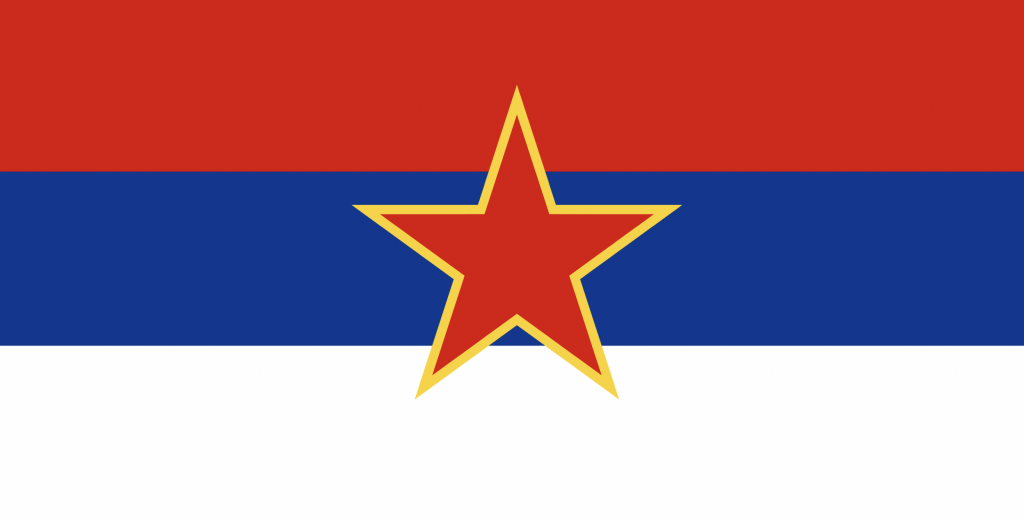
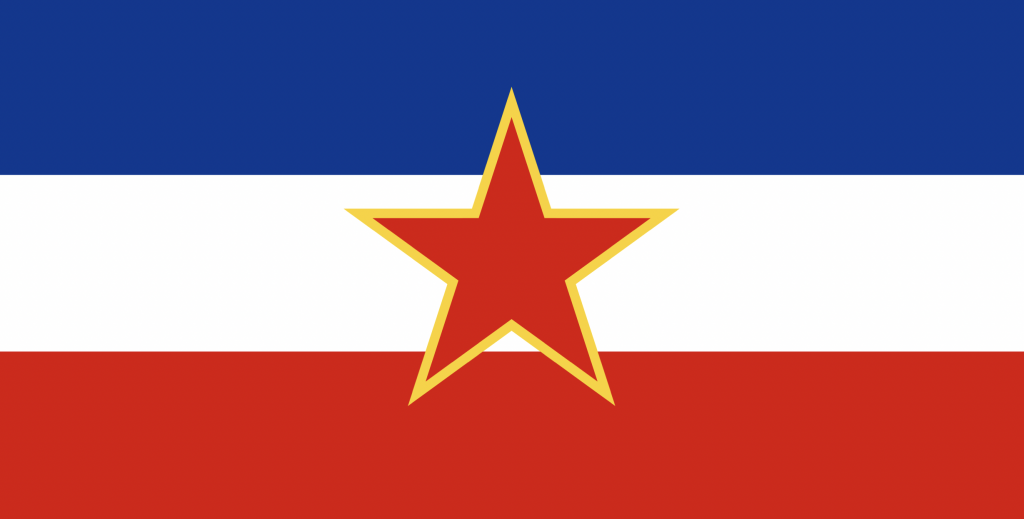
When the Socialist Federal Republic of Yugoslavia (SFRY) was formed after the war, Montenegro became one of its six republics. Under Socialist Yugoslavia, the red flag featuring a reversed Yugoslav tricolour with the red star in the centre. This was to represent the country’s socialist ideology and Montenegro’s integration within the Yugoslav federation.
The Path to Independence: Flags of Serbia and Montenegro
With the disintegration of Yugoslavia in the early 1990s, Montenegro became part of the Federal Republic of Yugoslavia, which was later renamed Serbia and Montenegro in 2003.
Under this federation, Montenegro used a flag almost identical to the Serbian flag, albeit with a lighter shade of blue. Despite the shared federal identity, there was a growing push within Montenegro to emphasize its unique culture and historical symbols.
In 2004, Montenegro introduced a red flag featuring a golden double-headed eagle — a tribute to its regal heritage, as it was very similar to the Princely standard of the Petrović-Njegoš monarchy. This design also brought back the symbol of the golden lion.
This flag continued to represent the country after its formal independence in 2006. By a narrow margin of 55.5%, Montenegro voted to secede from Serbia via a referendum.
The Modern Flag of Montenegro: Symbols of Heritage and Unity
The current flag of Montenegro incorporates various historic and monastic symbols. These were intended to act as a bridge between Montenegro’s rich history and its recent independence. Here’s a breakdown of the symbolism:
- Red Field with a Golden Border: The red field has been part of Montenegrin flags for centuries. It represents bravery, resistance, and unity, as is the case on many other national banners. The golden border is a mark of the country’s regal heritage and enduring pride, as well as optimism for the future.
- Double-Headed Eagle: The golden, double-headed eagle dates back as far as the Byzantine and Serbian empires but came to prominence under the Petrović-Njegoš monarchy. For Montenegrins, it symbolizes their independence and the country’s deep-rooted Orthodox faith.
- Golden Lion: Centered on the eagle’s chest is a shield with a golden lion. It has been associated with Montenegrin strength and independence since its use on the 19th century royal coats of arms.
- Crown Above the Eagle: The crown atop the eagle’s heads reflects Montenegro’s long-standing royal lineage, even as the country is now a republic.
The royal element ties Montenegro to its storied past, while the neutral tones of red and gold aim to unite Montenegrins across ethnic and religious backgrounds.
Why Do We See Other Flags in Montenegro?
Although the national flag is widely displayed on government buildings and during official events, other flags are often flown in regions with high ethnic diversity. This is reflective of Montenegro’s complex identity.
- Serbian Flag: The links between Serbia and Montenegro are strong, and many Montenegrins still identify as Serbs instead. Given this, the Serbian flag is a common sight across Montenegro. This is especially true in the northern and eastern areas, where cultural ties to Serbia are strongest
- Religious Flags: The Serbian Orthodox Church flag, which incorporates the Serbian cross, is also frequently displayed. This reflects the importance of the Church among Montenegro’s Orthodox communities.
- Other Ethnic Flags: You may encounter the Albanian or Bosnian flags, as there are large populations of these communities across Montenegro.
The variety of flags seen in Montenegro demonstrates the region’s diversity and complex history. While they signify pride and cultural identity for many, they have also been sources of tension despite the country’s progressive, multicultural vision.
How can I see Montenegro for myself?
The modern Montenegrin flag serves as a bridge between Montenegro’s rich history and its aspirations as a sovereign European nation. While Montenegro has made great strides since independence, its flag reflects a journey still in progress.
If you want to see Montenegro’s vibrant culture and history firsthand, we offer our Ultimate Yugoslavia Tour twice a year, in November and May. This immerses you in Montenegro’s history, culture, and landscapes, while allowing you to see the country in the context of its neighbouring former Yugoslav republics.
For a deeper dive, we can customize your Montenegro itinerary to suit your interests. While the country may now be considered “touristy,” getting off the beaten trail is still difficult and requires the right contacts. Our guides are ready to help you experience Montenegro like a local. For more details, check out our Montenegro page or send us an email.





